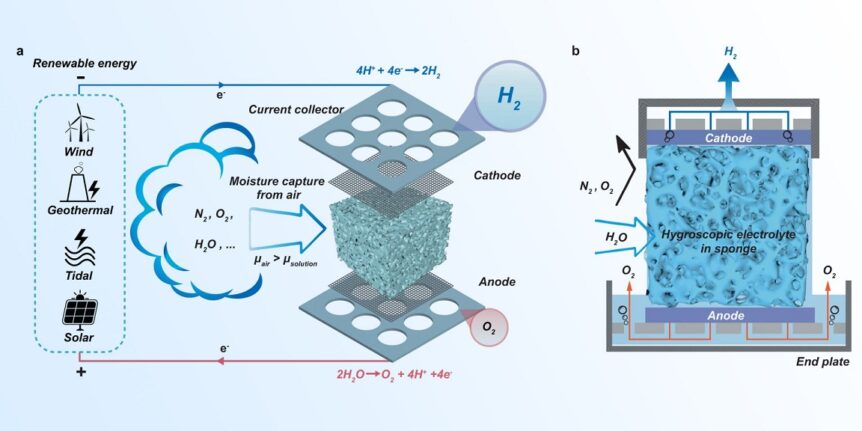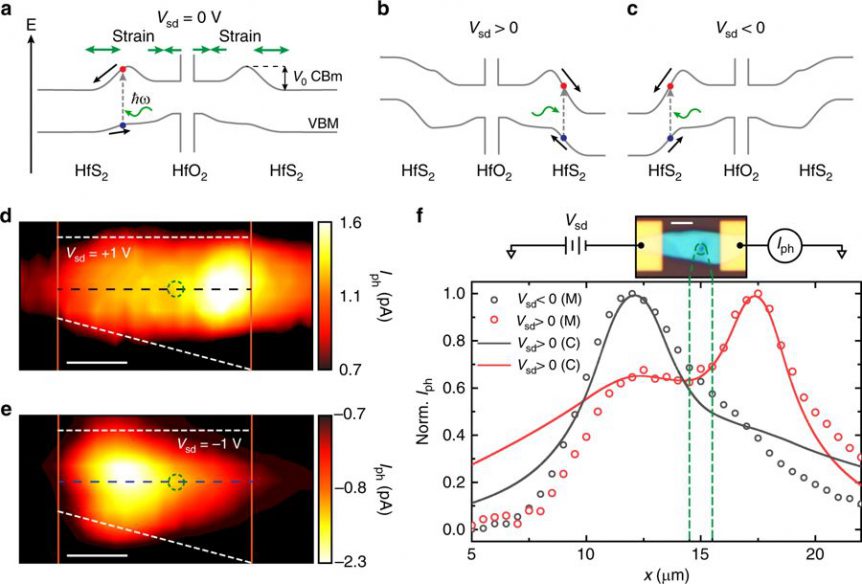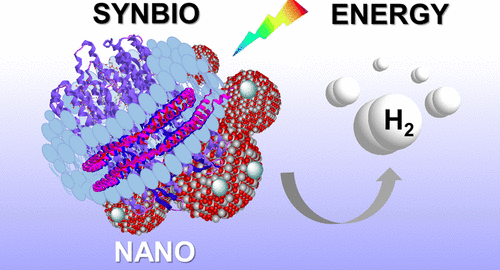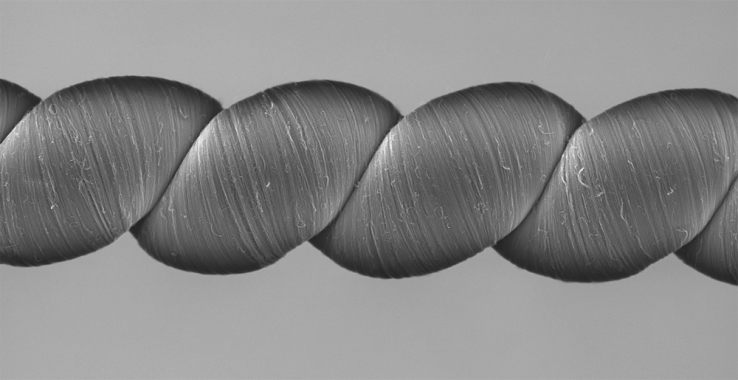Extracting “green” hydrogen from thin air may be a saving grace in attempts to produce clean energy. Normally, water splitting to produce oxygen and hydrogen requires large amounts of preferably pure water, a rare substance in much of the world. Science News headlines its article, “To overcome the water shortage problem in the case of widespread deployment of hydrogen production, a team of researchers from Australia, the United Kingdom and China has demonstrated a method of producing high purity hydrogen from the air by using hygroscopic electrolyte soaked in a porous medium as the moisture absorbent.” GreenCarCongress notes researchers at [The University of] Melbourne have demonstrated a way to extract hydrogen directly from air via the capture of freshwater using “a hygroscopic electrolyte and subsequent electrolysis powered by solar or wind.” Pulling water from the air to perform water splitting could be a daunting prospect, but researchers found they could squeeze sufficient amounts from air with as low as four …
Funneling Light and Energy with New Materials
Dr. Adolfo De Sanctis, a Research Fellow in the Quantum Systems and Nanomaterials group at the University of Exeter (UK), earned his Ph. D. in physics with a dissertation on “Manipulating light in two-dimensional layered materials” (Nature Communications, May 2017). The video below gives a short-hand view of his work. Other, less scholarly outlets (like this one) give an easy-to-read view of what he has accomplished, and why his research is of interest for many applications – including energy harvesting. Green Optimistic reports, “A team of researchers from the University of Exeter developed a solar cell with a record 60% efficiency. The idea behind this breakthrough is similar to using a ‘funnel’: corralling an amorphous collection of electrical charges into a more precise area, where they can be transferred into use. Using this idea, the researchers increased the efficiency of a solar cell from 20 to 60 percent. The Exeter team sees their research as a ‘gateway’ for further research …
Cheaper Hydrogen and Fuel Cells
Hydrogen would be a wonderful fuel if it were easy to get and easy to use. It makes up 90 percent of all atoms in the universe, equal to about 75 percent of all the mass. Hydrogen has been expensive to obtain because quite often its extraction from other matter entails using expensive catalysts such as platinum. Russia and America Team Up to Get Cheap Hydrogen Scientists from the Argonne National Laboratory in Illinois, working with researchers at the Moscow Institute of Physics and Technology (MIPT) and in Jinan, China combined efforts to produce hydrogen using sunlight and photosensitive lipids. We associate lipids with getting blood drawn at the clinic, and waiting patiently to see how our cholesterol and triglycerides are doing. Lipids are water insoluble fats, and are a key to this inexpensive method of extracting hydrogen. Using titanium dioxide as a photocatalyst, the teams “inserted a photosensitive protein into nanodiscs — made from circular fragments of cell membrane …
Smart Fabrics Generate Energy Several Ways
We see a great deal about wearable energy-generating fabrics, garments that will help keep the wearer warm, or cool, or visible because of built-in piezo-electric generators in the makeup of the fabric. Several researchers are taking this to the next level, creating new warps and woofs of materials that will create energy from a greater range of energy inputs. Elias Siores and the University of Bolton In 2011, Professor Elias Siores and associates at the University of Bolton in the UK created a flexible fiber that could harvest energy from movement and light. Siores said it was flexible enough to be woven into “a sail, window curtain or tent and generate power”. The material was recognized as a major innovation at the 2011 Energy Innovation Awards in Manchester. In a 2013 paper, the team, led by described devising a “smart fabric.” “A smart material is one that shows extraordinary response when subjected to a stimulus. Piezoelectric materials are considered as …




